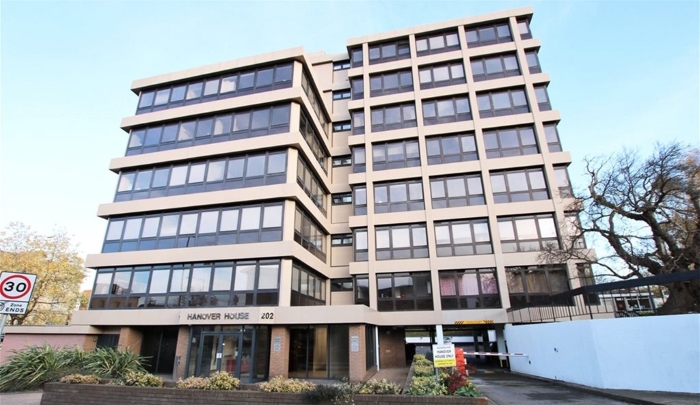Cladding removal plans submitted in Reading
- September 23, 2020
- 11:14 am

Matt Head
Share this content
The application to remove combustible aluminium composite material (ACM) from Hanover House in the city of Reading has been submitted, three years after the cladding was discovered.
In November 2017, firefighters for Royal Berkshire Fire and Rescue Service (RBFRS) recommended the closure of the car park below the tower after ACM was discovered, with RBFRS stating that it recommended this ‘due to fears a vehicle fire could spread to the flats above’. The car park was discovered to have used ACM identified in the government’s safety tests, though residents of the newly refurbished flats were ‘still in their homes’.
The seven storey building, a former driving test centre, was converted from offices into 14 flats without ‘changes to its external appearance’, receiving a new roof and internal refurbishment. Each of the flats and the communal areas are fitted with sprinklers, and ‘have other safety measures’ according to RBFRS, which was ‘notified’ about the cladding in the car park ‘as a result of guidance’ from the Ministry of Housing, Communities and Local Government.
Reading Chronicle has now reported on the plans submitted to remove the cladding from the block, with the statement from Oxford Architects stating: ‘The existing cladding has been confirmed by the Berkshire Fire Service as potentially proposing a fire safety risk to the residents at Hanover House. The current building is therefore not providing a safe environment for its residents.’
The news outlet said that plans to remove the cladding had been approved in October 2018, but permission expired a year later ‘with no work having taken place’, and the latest proposal ‘seeks to both remove and replace’ the ACM with a powder coated metal system that Hanover House Residents Management Company – which manages the block – says ‘meets all necessary fire and safety requirements’.
It added in turn that a Reading estate agent had been fined £30,000 for ‘delaying telling buyers of a flat in the block’ about the cladding, with the building one of four in Reading discovered to have been clad with ACM, including St Lawrence House, a social housing block; Queen’s Court, a student accommodation block; and Crossway Point, another social housing block.
Of those buildings, the cladding at Lawrence House was removed at the end of 2019, while the material on Queen’s Court was removed in March 2020; remedial work at Crossway Point was paused as a result of the COVID-19 pandemic, and is expected to be concluded in December.



